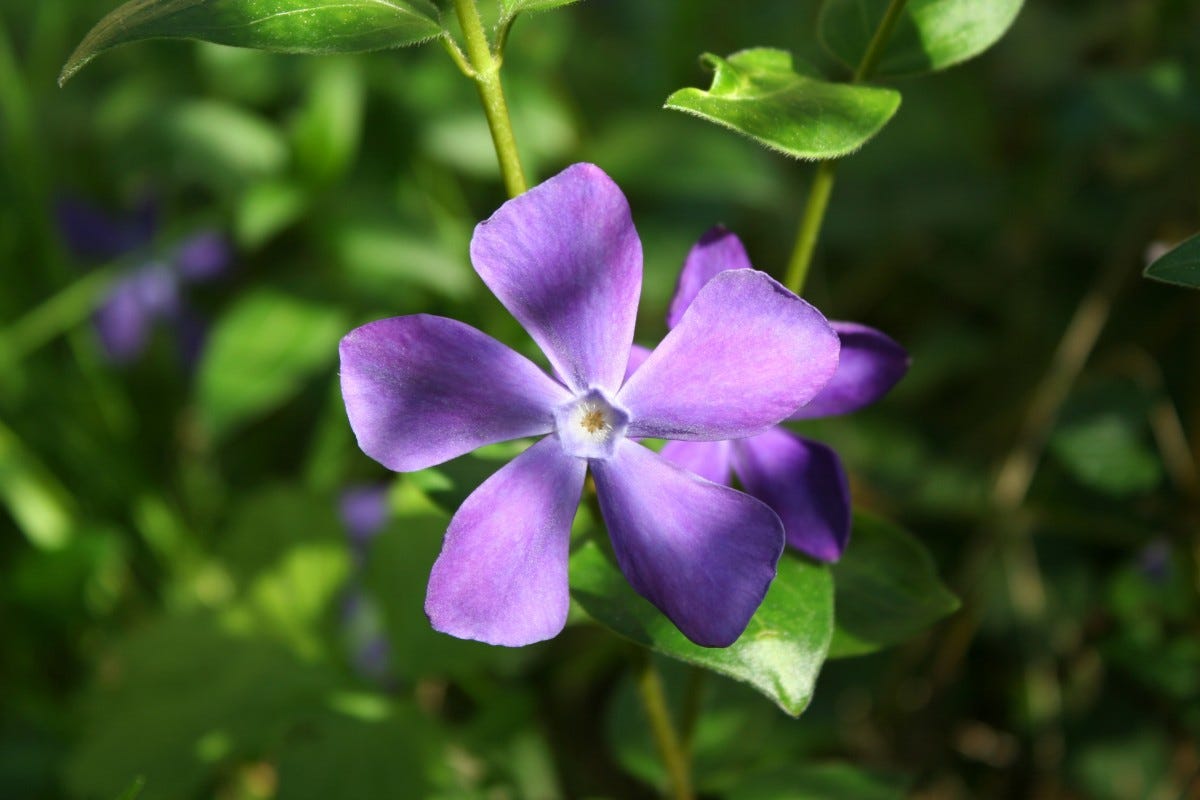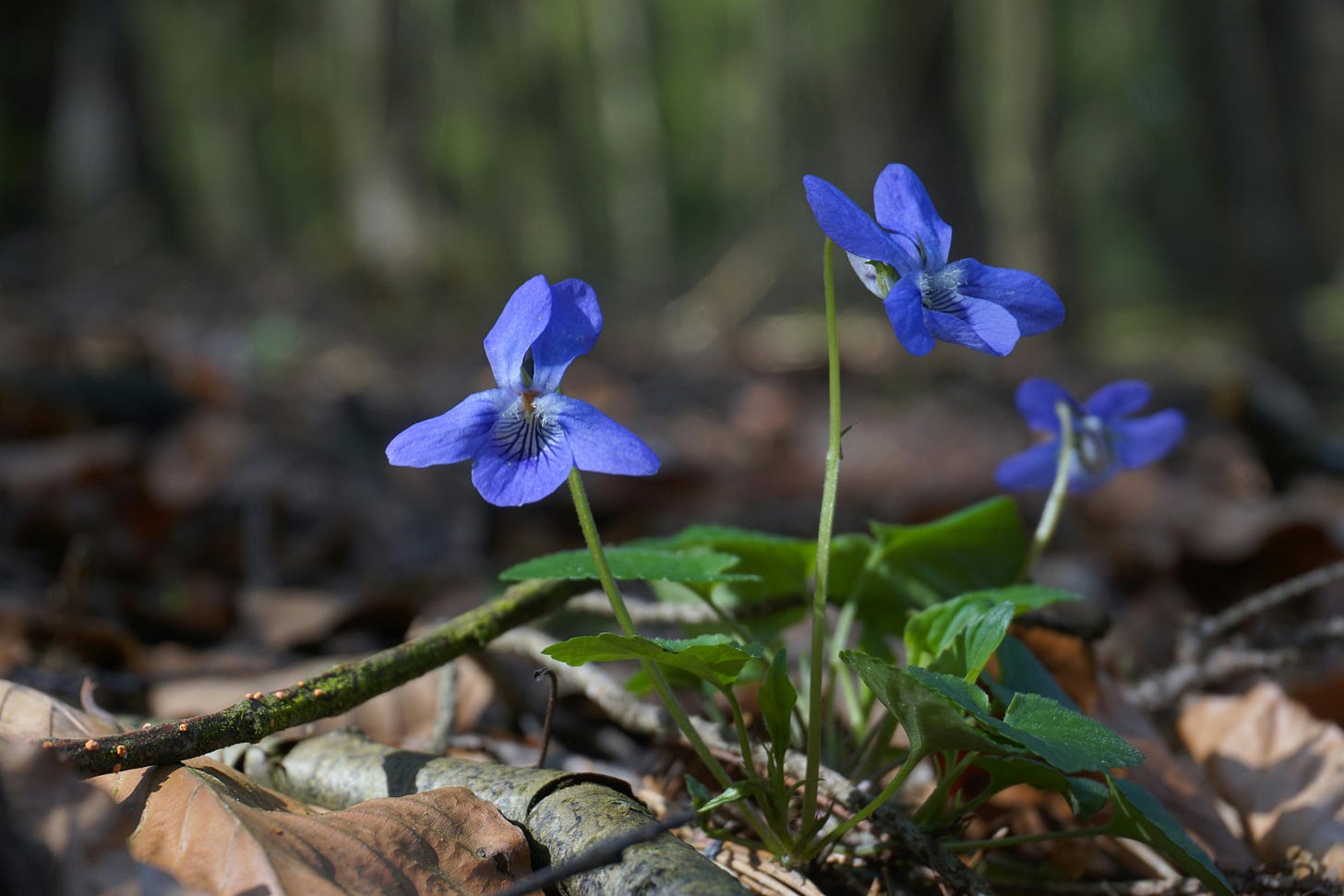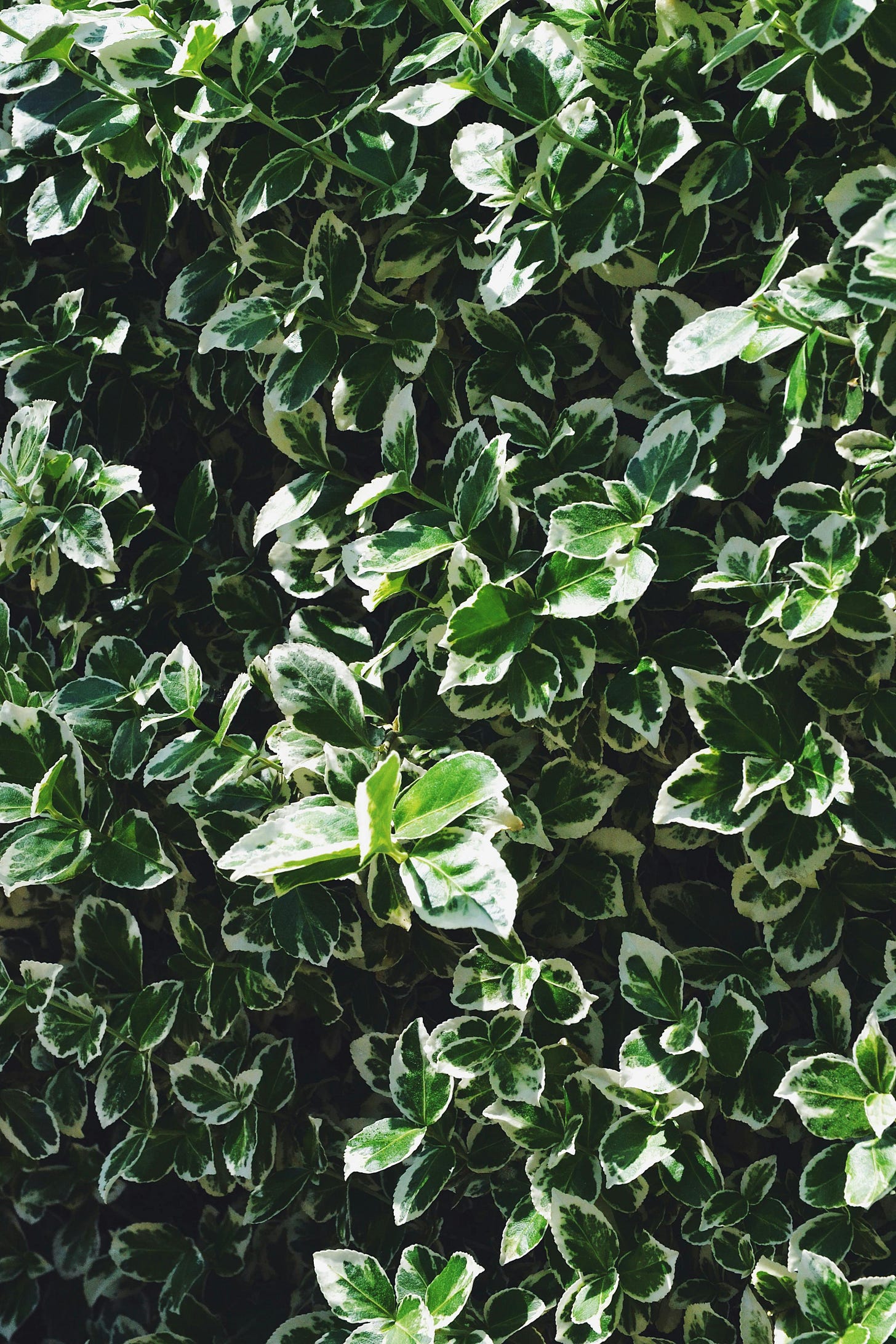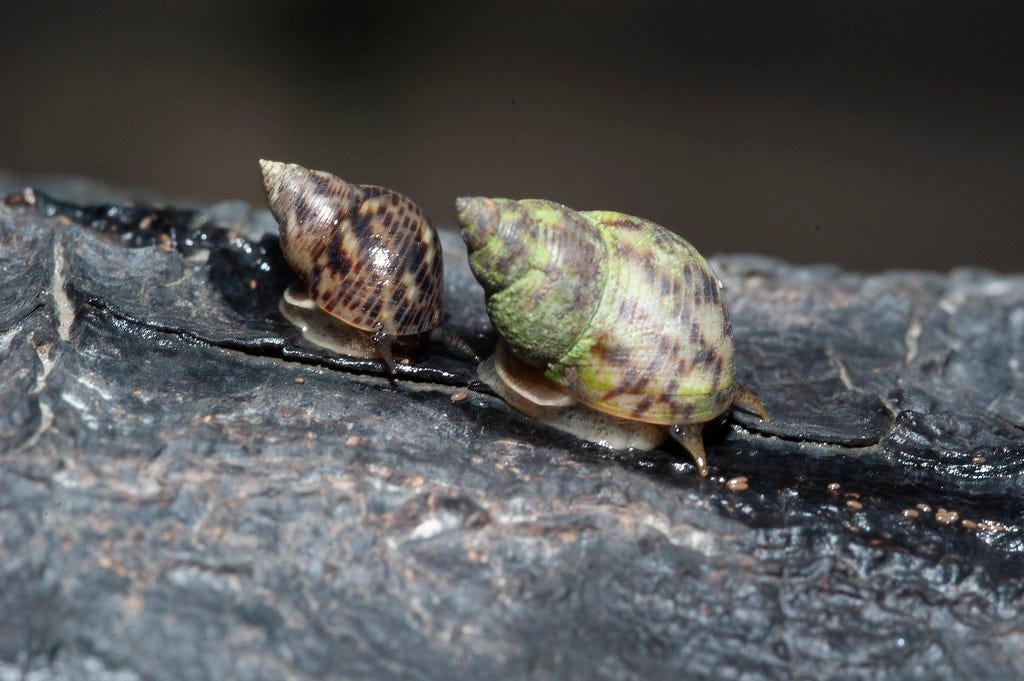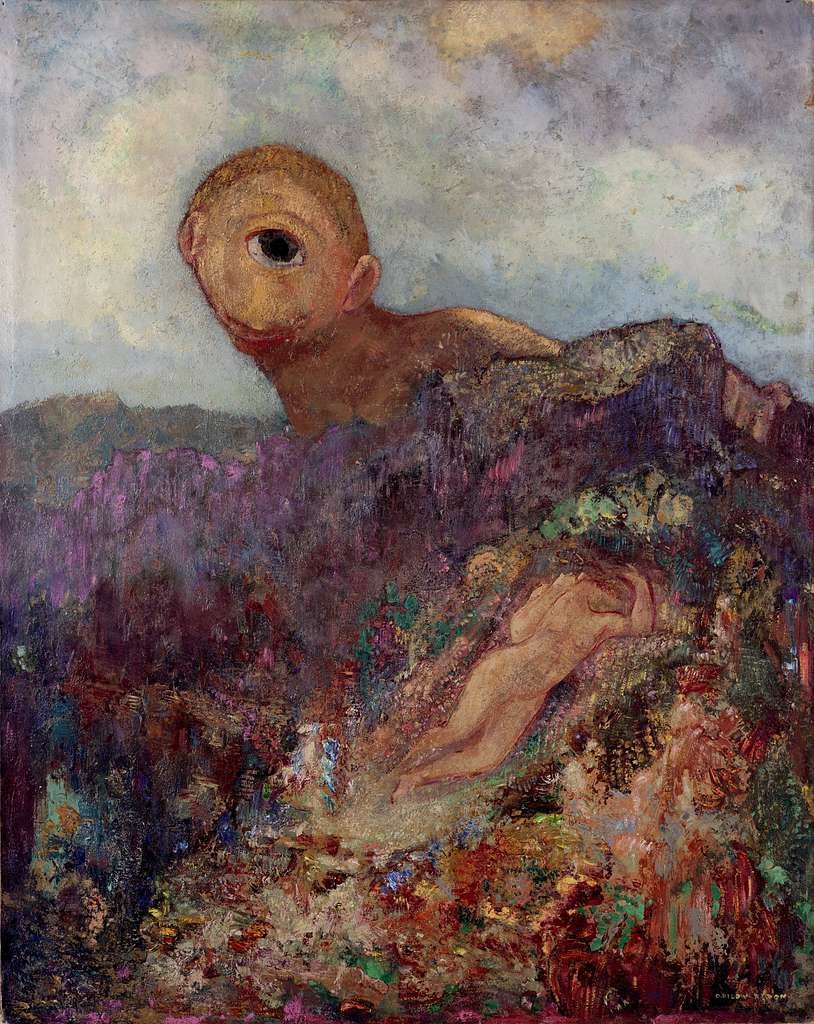ALSO KNOWN AS: Greater periwinkle, Vinca major, blue periwinkle, large periwinkle, foire du morte, fairy’s paintbrush, rose periwinkle, pennywinkle, cockles, creeping myrtle
How to know
purple whirling flower. No-they’ve stopped whirling, but they’re tipped like they were in motion
opposite leaves that alternate down the vine so each leaf catches more sun
that vine, narrow and persistent
five lobes on a funnel flower with a pentagram in the middle
There are a series of photos that were taken at the beginning of photography meant to prove the existence of fairies and ghosts. The photographs used leaking light from an aperture, or cut negatives to compose impossible scenes. They even crafted objects that would trick the eye into seeing beings - transparent, or flying, or made of light. With this new technology that represented the world as it appears to our eyes, like a replica of life, people believed wholeheartedly in what they saw.
Wouldn’t it be amazing to know once and for all that there is another world beyond this one? If there was some geometry that communicated the language of fairies? Or a formula beyond theory that made doors into the beyond? A touch that would prove the magic we sense around us all the time was solid, trustworthy? I like the idea of all the world being dependent on variables and numbers because it reminds me that numbers are an expression of being, a language for understanding and connection; a language that, frankly, is not tied to our thoughts. It just is. The symbol of zero, or the representation of unreal or negative numbers, imagines that there are alternative forms of logic. If one means a rock, negative one means something else. I think - that maybe if we look close enough, if we wait long enough, listen deeply enough, we would begin to see the formula for the cracks we dream about.
Spring Pinwheels
Below trees frothing with pollen and bursting with petals the periwinkle flowers look like pinwheels centered around a pentagon. The periwinkle technically has one funneled petal with five lobes that appear to have been whirling like windmills - until we look at them. Then they freeze. The number five is all over this plant, in the petal and the calyx - embedded in the pentagon that holds the reproductive parts.
Their vines mat everywhere, they just grow with a roiling persistence in long vines, that dive into the soil and then come back up on a stem that rises up like a charmed snake, bearing a single bleary, dizzied eye in the form of the purplish eye. Vincer has many roots as well. It refers to the number five that repeats itself throughout the flower. In latin “vincere” means to “bind.” It also means “to snip.” How names overlap with each other, tells us a variety of stories about how this vine was used. It was garlands that were placed, in Italian culture, on the coffins and graves of children. It seems this plant is a bit of a companion to children. There are eighty six alkaloids present in the plant. Alkaloids are chemical compounds in organic material that have at least one nitrogen atom, and these alkaloids are generally what is extracted from the plant to make pharmaceuticals. In the Madagascar periwinkle vincristine and vinblastine - helping childhood leukemia. Before the research began in the 60’s, there was only a 10% chance of survival from leukemia. Now there is a 80%-90% survival rate. This is traditional indigenous knowledge that was not supported by western scientists at the time, in the sixties. And this taking of the alkaloid chemistry is known as biopiracy - a complete erasure of the indigenous knowledge and protocols that surround it.
I think that if anyone inhabits another world, it is children. In his poem, Kahlil Gibran describes this other world, “For their souls dwell in the house of tomorrow, which you cannot visit, not even in your dreams.” Around this there was romantic ideals about how children are somehow supernatural. Which doesn’t give children the autonomy and wisdom that they have.
It’s easy to think a child is forgiven (by whom?) by never being given adulthood. It’s easy to romanticize childhood, we forget quickly how terrifying and confusing this time can be. I think of the true tragedy in the poem, The Stolen Child, by William Butler Yeats, is that we all know children do know the sorrows of the world. The fairy summons the child away from the “weeping” of the world precisely because this is what the child is experiencing. They don’t say that the fairy world is full of endless joys. The pain of the world is not expressed in the same way as adults. We can have the fantasy of protecting the children, we can try and protect the little child within ourselves, the one we remember, the one that might have walked with fairies, that understood the world in a different, non-adult, way. And therein lies the other tragedy. As we grow up, we must, in a way, forget what it was like to be a child. It’s not innocence that children have. It’s something much more profound. Something I can’t describe because I am not there anymore.
Childhood is the periwinkle of life - the child has been in the world of fairies and they must leave that purplish, blushes in between stage, relinquishing it to the children after us.
The leaves are glossy, except for a single line of trichomes - hairs - along their sides. Perhaps to feel the world. The leaves are set opposite one another in the shape of almonds. Their veins are opposite one another as well. But instead of going up like a step ladder, the leaves alternate what side of the stem they grow from. This is called decussate and it allows for each leaf to have as much sun as possible.
The reproductive part of the flower is very nearly animal. It’s hairy. Deep within that funneled pentagon is a mess of fuzzy anthers that cover an equally fuzzy pistil. It’s pollinated by those frenzied bees of peak spring, bumble bees and fly bees, insects with a long proboscis.
Once pollinated the periwinkle develops drying follicles that shatter in the fall.
The Blue of Between
You can find this plant’s native range in the Balkans and Caucasus mountains, the uplands of North Africa, and Turkey. From southern France to the base of the Himalayas. Here periwinkle will grow in sun and shade alike in valleys and along streams. It grows in the clearings of oak woods. So it can sustain in acidic soil where there is a high level of decomposing organic matter. But it can also survive in tough clay or loose sandy soils. You will find it in late spring bloom and while it may bloom again in the early autumn, gardening sites will tell you that with proper care, it doesn’t stop blooming all summer long.
But in the wild, it needs that touch of cold.
It can also be used as a soil stabilizer. But it behaves invasively in many temperate regions where it isn’t native, in the US, New Zealand and Australia. The stems travel in water currents during rainy seasons, and reestablish themselves elsewhere. Once settled it can take up nutrients from the soil so other plants can’t grow - not to mention the fact that many of the native pollinators are not adapted to these plants, so unlike native plants, they don’t contribute as much to foreign ecosystems as native plants do.
The periwinkle is part of the dogbane, the Apocynaceae family, related to the oleander and milkweed. A large group of perennials, trees, vines, and shrubs that grow in many climates around the world. This, like the rest, kills dogs. When broken open it has a milky latex substance which is the same stuff that gives name to our very own milkweed.
Periwinkle has been used in various astringent and purgative ways. Know, it the purge will not be pleasant. So medicines made out of periwinkle heals all sorts of wounds. They are used as a purgative, agents that clear the system. This same Madagascar periwinkle can also be used as a substitute for insulin traditionally used in the Philippines. The Vinca major itself used to be used as an aphrodisiac. Periwinkle is the traditional “blue” of weddings.
In terms of its most common name. The flower’s habit is hidden in the color, vincapervinca. A periwinkle, the violet that occurs in the early spring, in the water, when the sun is just so, and in the sky on summer evenings when you have nowhere to be, but to gaze at the sky. The color is not the doorway to a fairy land, it is the place. When we see it we are there. I know you can feel it. It’s why the impressionists and symbolists couldn’t stop emoting with it. It’s why people feel shame when they see it. It is the color of the belly of a storm cloud.
The color periwinkle is its own miracle. This specific blue has a way of evading specifics. It is blue and purple at the same time. Some have described it as being “lit from within,” the way ultra violet is its own light. The color appears to be more than light hitting it. It is a form of light all on its own. Violet has more blue, where purple has more red. To critics of the impressionists, periwinkle came off as a deeply unserious color. It’s the color of something that won’t last. It’s the color of the in between - in between day and night, the color of dreams. Close your eyes and imagine a fairy land and periwinkle probably fits. It has its own space.
periwinkle is a kind of lucid dream, a world in pastel. The impressionists and symbolists who looked to traditional stories who considered their value on a collective level and who reeled from a world war such as no one had experienced before, found periwinkle and made realms that were profoundly unreal with it. Maybe these other worlds exist in a shift of the light, or a patience that might severe time, that might make you believe.
Myth for periwinkle
Text for Myth; Movement: Moonlight Sonata, Nr. 14, Op. 27, Nr. 2, Ludwig von Beethoven, https://www.classicals.de/beethoven-piano-sonata-no-14
Not to be confused with violets. They are much smaller, they don’t have radial petals - and they don’t grow on vines!
Or wintercreeper, also known as fortune’s spindle. The leaves look similar though they don’t have the milky sap in them.
or Periwinkle. That’s a snail! It’s name comes from the Germanic wincle, which means “snail.”
Forager Friendly:
Yes, depending on where you are, absolutely. There may be laws about if you can travel with it, and please don’t plant it in places where it’s invasive. I’m sure you can find a lovely clematis, or purple flower that’s native to wherever you are that will do the trick.
Sources
https://en.wikipedia.org/wiki/Vinca_major
https://plants.ces.ncsu.edu/plants/vinca-major/
https://pfaf.org/user/plant.aspx?latinname=Vinca+major
https://mortonarb.org/plant-and-protect/trees-and-plants/common-periwinkle/#more-information
https://www.theparisreview.org/blog/2020/08/19/periwinkle-the-color-of-poison-modernism-and-dusk/
https://mdc.mo.gov/discover-nature/field-guide/common-periwinkle
https://poets.org/poem/stolen-child
https://botanical.com/botanical/mgmh/p/periwi27.html
https://gobotany.nativeplanttrust.org/species/vinca/major/
https://landscapeplants.oregonstate.edu/plants/vinca-major
https://ethnoground.blogspot.com/2013/02/three-cheers-for-periwinkle-ethnobotany.html
https://plants.ces.ncsu.edu/plants/vinca-minor/
https://en.wikipedia.org/wiki/Vinca
https://www.youtube.com/watch?v=89QCxNed7UM
Where the wandering water gushes
From the hills above Glen-Car,
In pools among the rushes
That scarce could bathe a star,
We seek for slumbering trout
And whispering in their ears
Give them unquiet dreams;
Leaning softly out
From ferns that drop their tears
Over the young streams.
Come away, O human child!
To the waters and the wild
With a faery, hand in hand,
For the world's more full of weeping than you can understand.-Stolen Child, William Butler Yeats




